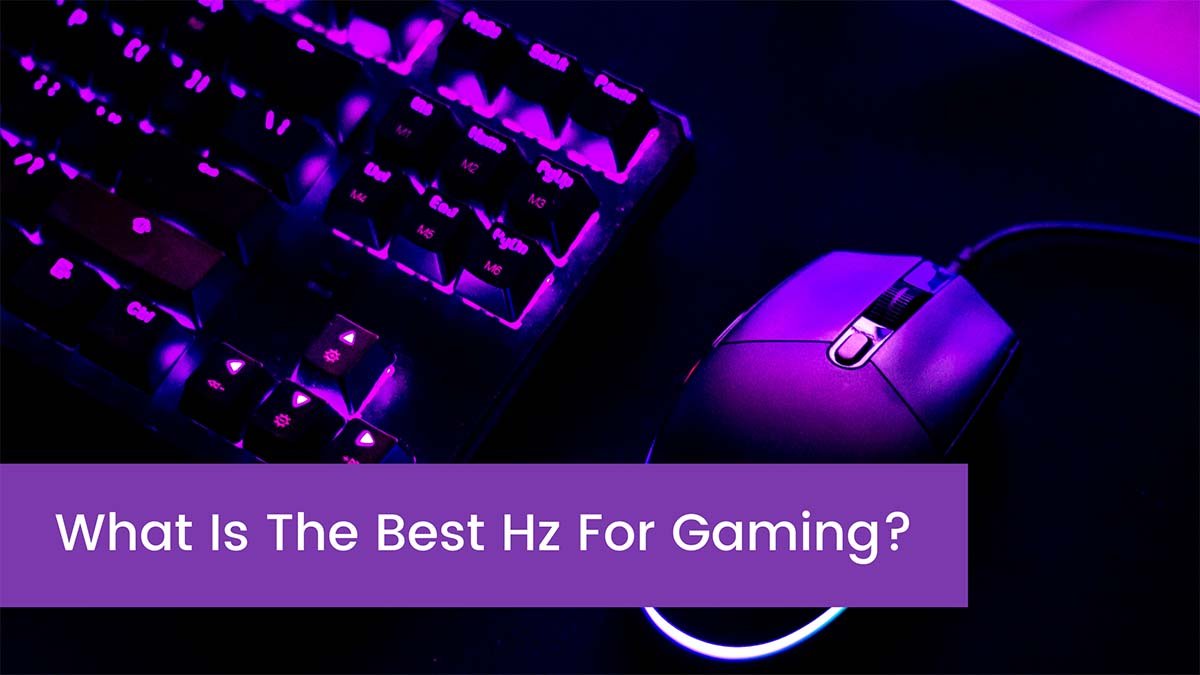Your monitor’s refresh rate is measured in hertz. The number of times your display refreshes itself per second is measured in hertz (Hz for gaming). This indicates that a 60Hz monitor will refresh the image showing 60 times per second.
A 120Hz monitor, on the other hand, produces 120 images per second, a 240Hz monitor produces 240 images per second, and so on, with some obvious advantages that we’ll examine shortly.
In general, monitors with faster refresh rates provide a smoother gaming experience since they physically display more frames per second.
Refresh rates have been continuously increasing over time. Although 60Hz provided a satisfactory experience, the market eventually demanded higher refresh rate panels due to competitive gaming and the need for more smoothness. After a while, 144Hz monitors became available, bringing a significant improvement in both gaming smoothness and performance.
The 240Hz display craze wasn’t long behind, giving a similar increase in image smoothness but not as noticeable as the 60Hz to 144Hz boost. Today’s world has a wide range of refresh rates to select from, with only the top gaming displays offering refresh rates of 360 Hz or higher.
If you don’t know how to check and alter your monitor’s refresh rate, you may learn how to get the most out of your equipment by reading up on checking and modifying your monitor’s refresh rate.
Best Hz for high-tier competitive gaming
Most competitive monitors have a maximum refresh rate of 240Hz to 360Hz. If you’re a competitive gamer with a system capable of frame rates greater than 240 in your favorite game, a monitor in this range is the best option.
But it won’t matter if you can get those frames while staring at a wall. You should be able to average 240 or more frames per second, which is your display’s refresh rate, to get the most out of it.
You can still utilize the monitor, but you won’t average the required frames. A display with a lower refresh rate will also be less expensive.
Best Hz for variety gaming
Between 144 and 240Hz monitors, 165Hz is the middle ground. Running a 144Hz refresh rate monitor can be considered settling if your system can kick in more than 144 frames per second but fail to attain anything over the 200 range.
A 165Hz display gives you the best of both worlds, and they’re also less expensive than 240Hz and 360Hz panels.
The best refresh rate for everyday competitive gaming
Every gamer’s stepping stone to high refresh rate monitors is 144Hz. It’s virtually the gold standard, so even if you plan to go higher than 60Hz, a 144Hz display is the bare minimum you should have as a competitive gamer.
The difference between a 60Hz and a 144Hz display will be the most evident when detecting how much more fluid one monitor is than another. However, it may become difficult to recognize the difference as you rise through the ranks.
There are a variety of possibilities that might be considered bargains when compared to displays with higher refresh rates than 144Hz.
The best refresh rate for casual gaming
60Hz monitors were all that existed in the early days of gaming. Before high-refresh-rate monitors took over, they were the only alternative available. While there is nothing wrong with 60Hz monitors, they will put you at a disadvantage in highly competitive games.
Even though it is a minor advantage, opponents with high refresh rate monitors can see you a fraction of a second faster than you can see them, allowing them to react more quickly. In most cases, the difference is measured in milliseconds, but if you’re a competitive gamer, you’ll want those milliseconds to work in your favor.
On the plus side, if you upgrade to a high refresh rate monitor, a 60Hz monitor can become the second screen in your setup.
How Does The Refresh Affect Your Gaming Experience?
While most people can immediately perceive differences in display resolution, others may find it more difficult to notice differences in monitor refresh rate.
However, the differences become more noticeable if you start playing a game on a high-refresh monitor. You may become so accustomed to gaming at a high refresh rate that anything less than that can be uncomfortable.
This is why many gamers who prefer to play on PC with high refresh rate monitors find it difficult to enjoy console games with a frame rate constraint of 30 frames per second (FPS). The most noticeable effect a high refresh rate display makes is in the perceived smoothness of games.
If you’re playing at a lower frame rate, the quantity of data that can be transmitted to the screen at one moment will be limited. The higher the refresh rates, the faster the data can be transferred and shown, allowing you to see more information on-screen and have a more fluid playing experience.
If a game is locked at a set frame rate, as is common on consoles, having a monitor that exceeds that rate will provide no benefit.
However, if your graphics card cannot achieve 60 frames per second for a certain game on your planned play settings, you will not profit from having a 144hz monitor because your GPU will not receive the necessary frames.
Is a 60Hz Monitor Suitable for Gaming?
60hz monitors can be beneficial for gaming, depending on the experience you want to achieve. If you want a 4K display and prefer playing games with the finest graphical fidelity, this is most likely the best option to get the most bang for your buck.
Similarly, if you typically play single-player and multiplayer games for fun and have a high-end graphics card, you will most likely have a great time.
There’s no incentive for console owners to consider a 144hz monitor because you’ll be hard-pressed to find a console that emphasizes frame rate in the next generation, and their workstations won’t be able to achieve performance more than 4K at 60fps anyhow.
Conclusion
The quicker refresh rate is essential for fps gaming since it allows the screen to respond to its rapid motions. Hertz represents the number of images displayed on the screen each second. A 60Hz monitor will display 60 images per second, whereas a 120Hz panel will refresh and display 120 images per second.
Today, high-performance gaming monitors with refresh rates up to 240Hz are available, providing a one-of-a-kind gaming experience. If you are a professional gamer, you should choose a monitor with a higher refresh rate to avoid the problems that a display with a lower refresh rate can cause.




